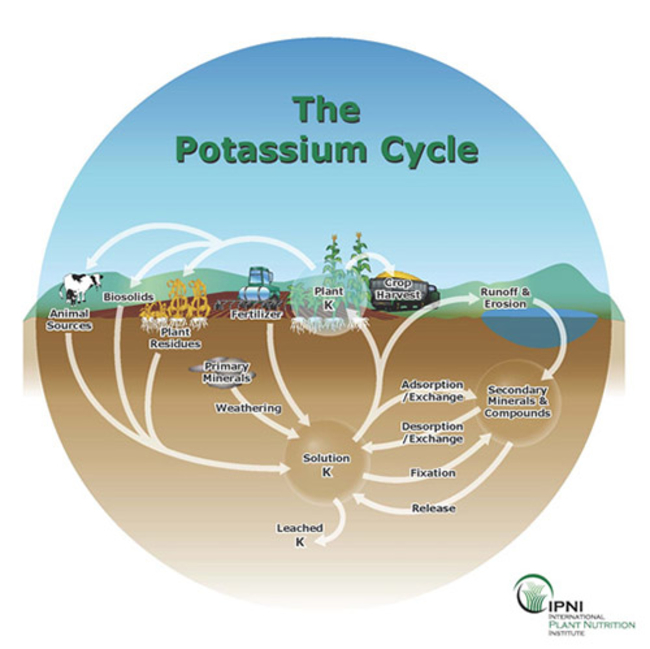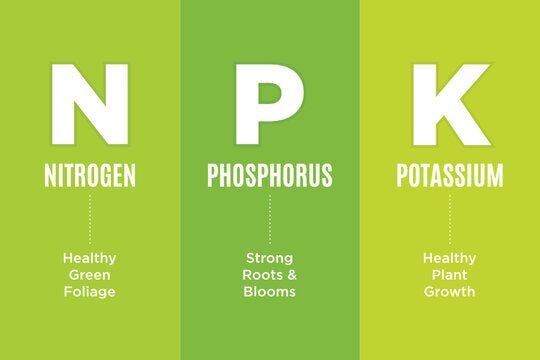Potassium is essential for plant growth as it regulates water uptake and aids in nutrient transport. It also enhances photosynthesis and strengthens plant resilience against diseases.
Potassium is one of the three primary macronutrients crucial for plant health, alongside nitrogen and phosphorus. It plays a vital role in various physiological processes, including enzyme activation, water regulation, and photosynthesis. Plants absorb potassium from the soil, where it helps in maintaining turgor pressure, promoting cell expansion, and improving overall vigor.
A potassium deficiency can lead to stunted growth, yellowing leaves, and increased susceptibility to pests and diseases. Understanding potassium’s role helps farmers and gardeners optimize fertilization strategies, ensuring plants flourish and produce abundant yields. This knowledge contributes to sustainable agriculture and enhances food security worldwide.

Credit: taurus.ag
How Does Potassium Affect Plant Growth : Step by Step Guide
Introduction To Potassium In Plant Growth
Potassium is vital for plant growth. It helps in many functions. Plants use potassium for photosynthesis, water regulation, and nutrient uptake. This mineral enhances root development and improves fruit quality.
A lack of potassium can lead to several problems. Common symptoms include yellowing leaf edges. Plants may show stunted growth and poor fruit yield. Leaves might also curl or become brittle. These signs indicate a need for more potassium.
| Symptoms of Potassium Deficiency | Effects on Plants |
|---|---|
| Yellowing Leaf Edges | Reduced Photosynthesis |
| Stunted Growth | Poor Fruit Quality |
| Curling Leaves | Weak Root System |
| Brittle Leaves | Increased Pest Susceptibility |
The Science Behind Potassium Absorption
Potassium is essential for plant growth. It helps plants perform vital functions. The primary mechanisms of uptake involve root absorption. Roots take in potassium from the soil solution. This process is influenced by various factors.
Factors influencing potassium availability include:
| Factor | Description |
|---|---|
| Soil Type | Different soils hold potassium differently. |
| pH Levels | Acidic or alkaline soils affect potassium solubility. |
| Moisture | Water helps dissolve potassium for easier uptake. |
| Organic Matter | Higher organic content can increase potassium availability. |
Potassium’s Impact On Photosynthesis
Potassium plays a key role in photosynthesis. It helps plants create their food. This process occurs in the leaves. Potassium boosts the production of chlorophyll, the green pigment in plants. More chlorophyll means better light absorption.
With enough potassium, plants can use sunlight more effectively. This leads to increased energy for growth. Stronger plants can resist diseases better. They also produce more fruits and flowers. Potassium makes plants healthier and more productive.
In summary, potassium is essential for strong plant growth. It enhances photosynthesis and energy use. Healthy plants thrive with the right potassium levels.

Credit: www.researchgate.net
Strengthening Plant Structure And Resistance
Potassium plays a crucial role in strengthening plant structure. It improves cell wall integrity, making plants sturdier. Stronger cell walls help plants resist diseases and pests. Without potassium, plants can become weak and vulnerable.
This nutrient also boosts disease resistance. Plants with adequate potassium can fight off infections better. They can recover faster from stress caused by drought or extreme weather. Stress tolerance is key for healthy growth.
| Benefit | Description |
|---|---|
| Cell Wall Strength | Enhances structure and sturdiness of plants |
| Disease Resistance | Helps plants fight off diseases and pests |
| Stress Tolerance | Improves recovery from drought and harsh conditions |
Boosting Crop Quality And Yield
Potassium plays a vital role in boosting crop quality and yield. It helps improve fruit size and enhances taste. Plants with sufficient potassium produce larger, sweeter fruits. This nutrient also supports better cell development and water regulation.
For seed and grain production, potassium is essential. It increases the number of seeds and improves their quality. With adequate potassium, plants yield more grains, which are healthier and tastier. Strong plants can resist diseases and pests better, leading to higher productivity.
Potassium In Soil: Sources And Management
Potassium is essential for plant growth. It helps plants develop strong roots. Natural sources of potassium include mineral rocks and decaying organic matter. These sources release potassium slowly into the soil.
Farmers can also use fertilizers for quick potassium supply. Common fertilizers include potassium chloride and potassium sulfate. These fertilizers help plants absorb potassium faster.
Using soil amendments like compost can improve potassium levels. Regular testing of soil helps manage potassium effectively. Balanced potassium levels lead to healthy, productive plants.
Testing And Monitoring Potassium Levels
Soil testing is essential for measuring potassium levels. This process helps determine nutrient availability in the soil. Collect samples from different areas of the garden. Send them to a lab for accurate results. Knowing potassium levels guides proper fertilization.
Leaf analysis provides a clear picture of a plant’s health. Take samples from healthy leaves during the growing season. Labs can test these samples for nutrient content. This method helps identify potassium deficiencies or excesses. Correcting these issues can improve plant growth.

Credit: extension.umn.edu
Best Practices For Potassium Management In Agriculture
Balancing potassium with other nutrients is key for healthy plants. Potassium helps plants use water better. It also strengthens cell walls. This improves resistance to diseases.
Proper soil testing can guide potassium application. Farmers should consider the levels of nitrogen and phosphorus. Too much potassium can harm these nutrients’ effectiveness.
Sustainable potassium use strategies include crop rotation and cover crops. These practices help maintain soil health. Organic fertilizers can also provide potassium naturally.
Using potassium-rich amendments wisely promotes growth. Choose the right timing for application to maximize benefits.
Frequently Asked Questions
How Does Potassium Benefit Plant Health?
Potassium plays a crucial role in plant health by regulating various physiological processes. It enhances water retention, improves nutrient uptake, and strengthens plant resilience against diseases. Adequate potassium levels lead to better flowering, fruiting, and overall plant vigor, contributing to higher yields and improved crop quality.
What Are The Signs Of Potassium Deficiency In Plants?
Signs of potassium deficiency include yellowing leaf edges, browning tips, and weak stems. Affected plants may show stunted growth and reduced fruit size. Additionally, leaves may curl or develop spots. Regular monitoring and soil testing can help identify and address potassium deficiencies promptly.
How Can I Add Potassium To My Soil?
You can add potassium to your soil using various methods. Common sources include potassium sulfate, wood ash, and greensand. Applying these amendments during soil preparation or as a top dressing can help improve potassium levels. Always follow recommended application rates for optimal results.
Is Potassium Important For All Plants?
Yes, potassium is essential for nearly all plants. It supports vital functions such as photosynthesis, enzyme activation, and water regulation. Different plants may require varying potassium levels, but overall, it is a key nutrient for healthy growth and development across species.
Conclusion
Potassium plays a crucial role in plant growth and overall health. It enhances photosynthesis, strengthens cell walls, and improves drought resistance. Ensuring adequate potassium levels can lead to lush, vibrant plants. Regular soil testing and balanced fertilization will help maintain optimal potassium levels for thriving gardens and crops.
Happy gardening!

